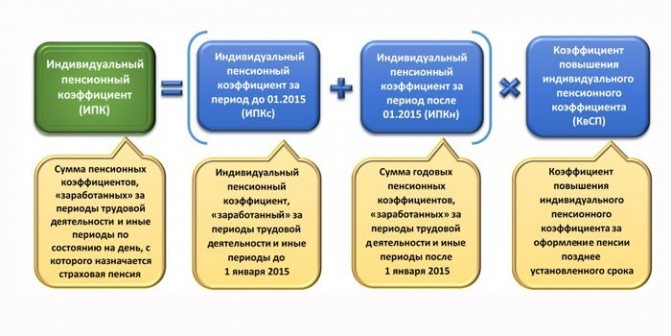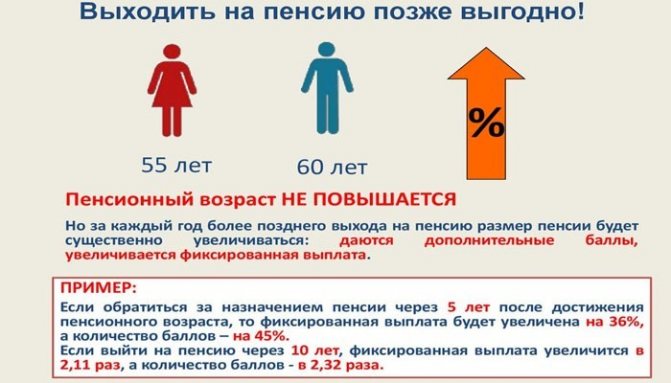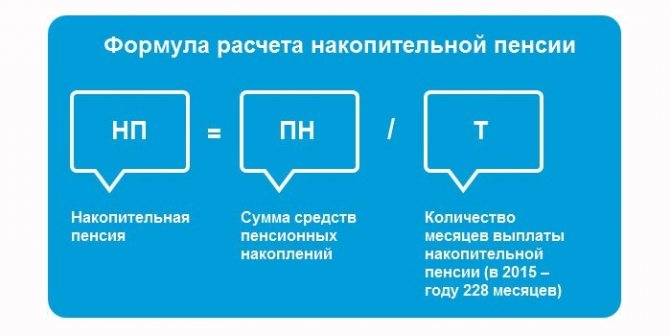In Russia, only former State Duma deputies and governors are completely satisfied with their pensions. The rest receive an average of 14 thousand rubles a month, but in fact a huge number of Russian pensioners live on a subsistence level of 9-10 thousand rubles. But pension legislation contains several rules that allow you to increase the amount of your pension, and for almost every pensioner there is an opportunity. We have collected 8 ways to increase your pension that some may not know about.
Check your experience
The pension consists of two parts - the cost of individual pension coefficients (points) and a fixed payment. Both of these parts can sometimes be increased - but now let's talk about points. These are the conventional units into which all pension contributions made by the employee are recalculated. Since 2002, all contributions have been accounted for in a unified personalized accounting system, and it is difficult to “lose” experience there. What cannot be said about the periods up to 2001 inclusive.
The work experience that a pensioner accumulated before 2002 can also affect the amount of the pension - through the length of service coefficient
. It has an effect when the length of service as of December 31, 2001 was more than 25 years for men and 20 years for women - then each additional year increases the amount of the calculated pension, which increases the pension capital, which, in turn, is then recalculated back into the pension and in points.
When applying for a pension, a Pension Fund employee collects information about length of service from several sources:
- employment history. This is the main document of a pensioner. But records from it without confirmation are accepted only if there are no claims to the records, signatures and seals. Otherwise…
- work certificates. If the entry in the employment record does not suit the employee in any way, you need to provide the appropriate certificate - from the place of work or from the archive (if the place of work has ceased to exist). It happens that orders are not saved in the archives, then they remain...
- witness's testimonies. It will be necessary to find two former colleagues from the same place of work who will confirm in writing that the applicant worked with them at the same time at the same enterprise. The big problem is that these witnesses will also have to prove their employment there, and the problem with documents may be relevant for them as well.
And it happens that when submitting an application, a person submits all available documents, but some of them were not taken into account
- although he may have 10 years of experience.
It’s very easy to check all this: you need to log in to State Services, then go to your personal account on the Pension Fund website and order a certificate of assigned pensions and social benefits there
. This certificate will indicate all the credited periods of work - and it will be enough to compare them with the work book. If something is lost, then you can safely go to the PF customer service and find out why. Perhaps this is the very case when you will have to look for witnesses - but for the sake of your pension it is worth doing.
Pensions of working pensioners and how to increase them
2015 was a period of great changes in the entire pension system. It has received significant adjustments at the legislative level. Now the labor pension consists of:
- insurance;
- cumulative.
When calculating insurance payments, the size of the IPC (individual pension coefficient) is taken into account. Its size:
- established by the state;
- subject to annual indexation.
The size of the pension began to depend on when it was issued. The country's legislation does not limit the right to work for persons who have retired. They retain pension payments. Every month, the employer transfers insurance contributions, the amount of which depends on the amount of wages, and not on the age of the employee and the fact that he receives a pension.
Funds in personal accounts gradually accumulate. Therefore, pensioners who continue to work are entitled to receive a pension supplement for each additional year of work experience.
Select another period before 2002
When calculating pensions for periods up to 2001, the key indicator is the salary of the future pensioner. But confirming it is not so easy: if work experience before 2002 is confirmed by a work book, a certificate from the place of work or archive, or testimony, then the salary level is only a certificate. Another problem is that the certificate must include salary data for 60 months of continuous service
, which not everyone has either.
Then the calculation proceeds according to one of two options:
- the average salary from the certificate is compared with the national average at that time (this is a coefficient that is limited to 1.2);
- The average salary itself is taken into account.
For most pensioners, the first option is more profitable, since there is no limit on the maximum pension amount. But there may be another problem here - if you request a salary certificate for a period that is not the most optimal, the pension will turn out to be less than it could be.
Every pensioner probably remembers approximately how much he earned in those years, and data on the average salary in the country can be found on many resources, including the website of the Pension Fund. It is enough to at least roughly compare your earnings with the average salary in the country
and understand whether the period is correct. For example, it makes no sense to simply select the period with the highest salary - average earnings in the USSR over the last decade increased from 174 to 303 rubles, and the ratio could change downward.
True, for those who received much more than the average salary, this does not make much sense - anyway, the ratio cannot be more than 1.2
(with a few exceptions).
Another option is to take a salary certificate from 2000 to 2001
– this is suitable if the pensioner did not have a continuous period of 60 months before the early 2000s.
Find non-insurance periods
Not only periods of employment can be included in the calculation of pensions - the law allows for so-called non-insurance periods
, which can be included in the length of service and even give the right to additional payments. There are several such periods:
- military and equivalent service - each year of service adds 1.8
points to the pension; - caring for an elderly person, a disabled person of group I or a disabled child – 1.8
points per year; - residence of a military spouse at a place of service under a contract in the absence of work – 1.8
points per year, but not more than 5 years in total; - residence of spouses of diplomatic workers abroad without work – 1.8
points per year, but not more than 5 years in total; - suspension from work due to an unfair accusation subject to rehabilitation – 1.8
points per year; - the period of caring for a child until he is one and a half years old is 1.8
points per year for the first child,
3.6
points for the second and
5.4
for the third. In total – no more than 6 years.
Non-insurance periods began to give pension points only recently - in 2020
when Russia switched to the current pension system. Therefore, anyone who has retired before should check to see if they have any additional options to increase their pension. For example, if upon retirement the Pension Fund did not receive documents for children (birth certificates), they can be submitted separately - this will increase the pension.
In general, there are more non-insurance periods
– this includes, for example, periods of receiving unemployment benefits, but they are only included in the length of service and do not give the right to additional points.
What methods of increasing payments exist?
For most young people, the concept of a pension is something distant and rather inaccessible.
Many sincerely believe that they will not live at all. This opinion was successfully reinforced by the pension reform in 2020. However, these are just unfounded statements. Read also: Help for small businesses in 2020
According to statistical data, in Russia citizens not only live to see their retirement pension, but also live receiving the required benefits for 15-20 (and sometimes more) years. That is why, so that you don’t have to eke out a miserable existence later, you should take care in advance about allowances for future payments.
To understand exactly how accruals are made and what will contribute to an increase in future payments, you need to understand which points have the greatest impact:
- The amount of wages is one of the important points. Based on the amount of income received, a person is awarded pension points. The maximum number that can be obtained is 10 points per year. However, for this, the monthly salary must be at least 65 thousand rubles per month. It is worth saying that for most citizens this amount is unattainable. 5 points will be awarded if the monthly income is 33 thousand rubles, respectively, the less a person receives, the slower his points accumulate. If your income is less than 33 thousand, points are calculated using an individual system. So, with a salary of 25 thousand, a citizen can only count on 4 points.
- Only “white” wages are taken into account. Absolutely everyone knows that citizens donate part of their income to the state every month. This money goes to pay for medical services, education in educational institutions and, of course, pensions. Those who receive salaries in “envelopes” (gray or black) must understand that their income is not taken into account anywhere. For those who receive the minimum income in the country, the size of the pension payment will also be minimal.
- Really worked experience. Working for a certain period, currently 15 years, is the responsibility of every citizen; this is the only way to earn the right to receive a normal pension payment. In another situation, the amount of accrual will be significantly lower than for the working population. Persons who have worked for more than 15 years receive additional points, due to which the amount of future accrual increases.
- The funded part - this applies only to those who have already received a payment from 2020. In this case, the pension is divided into 2 parts (funded and insurance). The first was voluntary at that time. In other words, the citizen independently determined the need to participate in the state program, thereby increasing his payment.
- Own savings. In fact, this point is the most effective, since it has been proven more than once that you can only take care of your future on your own. You can simply save for old age, albeit little by little, thereby forming a “cash cushion.”
As for passive income and additional income for those who already receive a pension payment. Until 2018-2019, these options were also relevant. However, we should not forget that the legislation has undergone a lot of changes. In particular, a regulation has been introduced concerning the self-employed. Those who receive additional unofficial income by working for themselves were required to complete the appropriate registration with the Federal Tax Service and pay taxes.
Pensioners who have additional earnings are deprived of a certain category of pension supplements. Therefore, before increasing your financial position in such ways, you should carefully weigh the pros and cons.
Read also: Child subsidies in 2020
Increase the fixed payment through additional payment
Before this, we considered options for increasing the insurance part of the pension - but some pensioners have the opportunity to increase the fixed payment. For most pensioners it is 5,686.25 rubles.
An increased fixed payment is received by:
- those who have reached 80 years of age or are disabled people of group I – 11,372.5 rubles (that is, double the amount);
- having dependent disabled persons - an additional 1,895.42 rubles (1/3 of the fixed payment) for each dependent, but not more than for three;
- those who have worked for at least 15 years in the Far North (with a total experience of at least 25/20 years) - 8,529.38 rubles (one and a half times the rate), payments for dependents are also higher;
- those who have worked for at least 30 years in the agricultural sector – 7,107.81 rubles (25% more).
It is clear that work in the Far North is confirmed when applying for a pension, as is disability, but additional payments for dependents or “rural” additional payments may have to be issued separately. With dependents
everything is clear - as a rule, these are minor children or grandchildren (up to 23 years old, if studying full-time); in the case of grandchildren, the fact of being a dependent may have to be proven.
“Rural” surcharges appeared recently, in 2020. You can get them by working at least 30 years in agriculture
(according to the list of professions), while the pensioner must still live in a rural area and not have a job. The list of professions has recently been expanded, so if necessary, the right to additional payment can be checked.
How to get a big pension
When registering with the Pension Fund of Russia, each person is assigned an individual number consisting of 11 digits. It is never repeated and is assigned to the citizen for life. As confirmation of registration in the compulsory pension insurance system, a special document is issued - SNILS.
When applying for a job, having a card is mandatory. If it is not formalized, the employer will do it himself. The SNILS number is used to transfer insurance premiums.
- How will sick leave be processed during coronavirus quarantine?
- How to choose a blender for your home, and which brand
- 6 warning signs of diabetes in men over 50
It is important to constantly monitor the amount of transfers through your personal account or by contacting the Pension Fund, since not all employers are conscientious and may not pay contributions in full.
Official employment
A high salary level is a guarantee that you will receive an increased pension in the future. This is due to the fact that insurance premiums are calculated only from official earnings, and not from money received “in an envelope”. With this scheme, the number of PBs will be less than with a white salary.
For example, the official salary is 70 thousand rubles:
- For a year, a person will be credited with 7.30 PB.
- If you receive 40 thousand rubles through the accounting department, and the rest according to the gray “in an envelope” scheme, only 4.17 PB will be credited.
- The difference for one year will be 3.13 PB (7.30 – 4.17 = 3.13).
- Multiplying this number by the cost of the PB for 2020, we get 320 rubles (3.13 x 87.24 rubles).
- Every year the value of the pension point is indexed. This means that the amount will only increase. If we assume that a person works for 20 years, then the pension will be less by 6.4 thousand rubles. Taking into account annual indexations, the amount of the lost pension may increase even more.
Increase in pension for long service
Recently, news has been spreading on the Internet that citizens are entitled to an additional payment to their pension for long service. The Pension Fund refutes this information, since according to current legislation, only the insurance period is taken into account when assigning a pension - the time when the employer made insurance contributions to the Pension Fund.
The only exception is taking into account the duration of work during the USSR period, since this indicator is taken into account when calculating the length of service coefficient. It is then used to determine the number of PBs during this time.
High official income
With a high salary, a larger number of PB will be accrued. According to the law, in order to assign an insurance pension, two conditions must be met:
- Have a minimum insurance period, which in 2020 is 10 years. Each year it increases by a year until it reaches a final value of 15 years by 2024.
- Earn the minimum IPC. For 2020, the value is set at 16.2 with an annual increase of 2.4 points. From 2025, the minimum will be 30 PB.
In addition, the legislation limits the maximum possible number of IPCs that a person can earn in 1 year:
- 2019 – 9,13;
- 2020 – 9,57;
- From 2021 – 10.
The IPC is calculated using a special formula, and each period (before 2002, from 2002 to 2020, after 2020) has its own methods. You can calculate the IPC for the current year based on the current salary on the Pension Fund website. A special calculator is used for this. There you can also determine the approximate amount of pension payments by filling out the necessary data.
- Dogo Argentino - history of origin and characteristics of the breed, education and maintenance at home
- 4 Ways to Get Rid of Acne Scars on Your Face
- Cone jam

Retiring after retirement age
Increasing your pension with extensive service is possible if you arrange a deferred retirement. This means that when the time for assigning payments is reached, the person refuses to receive pension benefits and continues to work.
For this, the state provides him with a bonus - an increasing coefficient. The value is established by law, differs for a fixed payment (FV) and IPC and depends on whether a citizen has the right to receive an early pension or not.
The highest pension accrual coefficient reaches ten years:
to PV without the right / with the right to early retirement
- 1 year – 1.056/1.036;
- 2 – 1,12/1,07;
- 3 – 1,19/1,12;
- 4 – 1,27/1,16;
- 5 – 1,36/1,21;
- 6 – 1,46/1,26;
- 7 -1,58/1,32;
- 8 – 1,73/1,38;
- 9 – 1,90/1,45;
- 10 and more – 2.11/1.53.
to IPC without the right / with the right to early retirement
- 1 year – 1.07/1.046;
- 2 – 1,15/1,10;
- 3 – 1,24/1,16;
- 4 – 1,34/1,22;
- 5 – 1,45/1,29;
- 6 – 1,59/1,37;
- 7 – 1,74/1,45;
- 8 – 1,90/1,52;
- 9 – 2,09/1,60;
- 10 and more – 2.32/1.68.

Monitoring the status of an individual pension account
There are 5 main ways that will help you monitor the status of your personal account and control the process of forming a future pension:
- through your Personal Account on the Pension Fund website;
- through the State Services portal;
- by downloading a mobile application running on devices running Android or iOS;
- by visiting the territorial office of the Pension Fund of Russia;
- through the Multifunctional Center (MFC).
Formation of a funded pension
You can increase your monthly income upon retirement by forming its savings part in non-state pension funds (NPF). You can do this yourself, and the size of contributions and their frequency are determined by the future pensioner at will. To form a funded pension, you must come to the company’s office with your passport and sign an agreement.
Some employers independently enter into agreements with non-state pension funds and form a funded pension for their employees. It will be possible to use the savings only after retirement, and the rule is valid if the employee has not moved to another company.
You can claim your earnings when men reach 60 years of age and women reach 55 years of age. The rule applies only to the duration of the transitional provisions of the pension reform.
There are several ways to receive the accumulated money. The pensioner chooses the option independently when concluding the contract:
- one-time entire amount;
- monthly for at least 10 years;
- for life every month;
- pass on by inheritance.

Apply for veterans and other benefits
In addition to pensions, some people in Russia are entitled to additional monthly cash payments (EMB). These are 2 groups - federal beneficiaries
(disabled people, veterans, Chernobyl survivors and some others) and
regional
(labor veterans).
With federal benefits, everything is clear - on the website of the Pension Fund there is a list of categories and the corresponding amounts of the monthly allowance. For example, combat veterans
receive 3,062 rubles per month,
disabled people of group II
- 2,782.67 rubles, and
former minor prisoners of concentration camps
- 5,565.32 rubles. Most likely, everyone who is entitled to these payments has received them a long time ago.
But with regional payments everything is not so simple. At the regional level, EDV is paid for labor veterans
, but there are such veterans at the federal level, and there are at the regional level. Differences - with federal status, payments can be received in any region where a person lives, but regional status gives the right to payments only in one region.
They receive veteran status according to approximately the same criteria - 30-40 years of work experience, of which 15-20 years in the territory
corresponding region, sometimes you still need to have production awards.
The payment amounts are different everywhere - usually it is about 500 rubles,
in the poorest regions there may be no payments at all. In addition to payments, you can receive the right to 50% compensation for the cost of housing and communal services - that is, you will not have to collect certificates to receive a subsidy on a general basis.
How capital pensions can be increased
Citizens living in the capital are in a special position.
In particular, low-income pensioners have the right to receive additional compensation. This right can be exercised by persons receiving payments in an amount not exceeding the established minimum. The current figure is 11,816 rubles. Payments of additional compensation are made from the state budget. In addition, residents of the capital can count on receiving additional payments called the “city social standard”. The amount issued is 17.5 thousand rubles. Only native residents of Moscow who have lived in the capital for at least 10 years can apply for this additional payment.
There are additional allowances:
- disabled people of groups 1 and 2, as well as those who raised disabled children until they reached the age of 18 - plus 12 thousand rubles;
- rehabilitated citizens - 2 thousand rubles;
- home front workers - 1.5 thousand rubles;
- veterans of the Great Patriotic War - 2 thousand rubles;
- participants in the defense of the capital - 8 thousand rubles;
- heroes of the Soviet Union - 25 thousand rubles;
- having the title “Honorary Citizen of Moscow” - 50 thousand rubles;
- for the title “People’s Artist” - 30 thousand rubles;
- for the title “Honored Artist” - 30 thousand rubles;
- persons over 101 years old - 15 thousand rubles.
Read also: Subsidy for utilities in 2020
Give up unnecessary benefits
A set of social services (NSS) is inextricably linked with the concept of a monthly cash payment. That is, all federal beneficiaries who are entitled to EDV also have the right to a set of social services. This is a set of services including the provision of medicines, sanatorium treatment and the opportunity to travel to him
.
The main thing you need to know about NSO is that it can be received in kind or in cash. Moreover, you can keep the necessary services in kind, and transfer the rest into cash. For the entire recruitment in 2020 they pay an additional 1155.06 rubles
, and this sum consists of the following:
- free medicines, medical products and medical nutrition – 889.66 rubles per month;
- vouchers for sanatorium and resort treatment – 137.63 rubles;
- travel to the place of treatment and back – 127.77 rubles.
It is important to understand that if the beneficiary retains the right to free medications, he will be able to receive them for a larger amount - exactly as much as the attending physician prescribes to him. Therefore, for those who need expensive medications as prescribed,
It’s better not to give them up.
Getting a voucher is much more difficult (you also need a referral from a doctor), so most beneficiaries refuse them. In this case, 265.4 rubles are added to the EDV, which is not as bad as for unused services.
In addition to federal benefits, you can receive the cash equivalent of some regional
. For example, Moscow pensioners can receive in cash the cost of free travel on city and suburban transport - 400 and 199 rubles, respectively; there are similar opportunities in other regions.
Apply for additional payment for care
For quite a long time in Russia it has been possible to provide care for a disabled person. This applies to the following categories:
- disabled people of group I;
- elderly citizens who need constant care (according to a doctor’s opinion);
- everyone over 80 years of age.
For someone who will care for an elderly person, there is only one condition - he must not work
(register with the employment center or receive a pension). No one will check whether he is really caring for an elderly person, and there is no requirement to live with him either.
An additional payment of 1,200 rubles comes with the pension
namely a disabled person. What to do next with the money is up to him to decide: he may not give it away, he can give it away in part, in full, or even pay extra from his own money. If the payment is made by the parents of a disabled child or a group I disabled child since childhood, the payment amount will already be 10,000 rubles.
Anyone who provides care for an elderly person is also not left without bonuses - for him this time is counted towards the insurance period
, and 1.8 pension points are awarded for each year.
If the care payment is issued by a pensioner from an area where there is a regional coefficient
, the payment increases by it.










